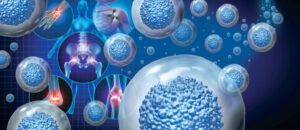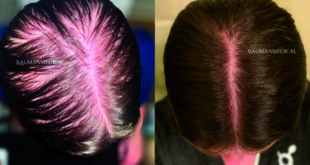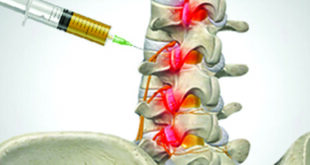In the world of modern medicine, patients suffering from chronic pain and degenerative conditions often face a difficult choice: undergo invasive surgery with lengthy recovery times or rely on corticosteroids that provide only temporary relief. However, an innovative and highly effective alternative is revolutionizing the way we heal—regenerative medicine. Utilizing the body’s natural healing mechanisms, regenerative therapies offer a powerful, long-term solution that is safer, more effective, and far less disruptive than traditional treatments.
 Achieving the best results with regenerative medicine requires the expertise of a highly trained specialist. An expert in regenerative medicine understands the complexities of these advanced treatments, ensuring they are applied with precision and tailored to each patient’s specific condition. From selecting the right therapy—such as stem cell treatments or platelet-rich plasma (PRP)—to utilizing state-of-the-art imaging techniques for accurate application, the role of a skilled practitioner is vital in maximizing the benefits of regenerative medicine. With the right specialist guiding the process, patients can experience optimal healing, reduced pain, and long-term recovery without the risks associated with surgery and corticosteroids.
Achieving the best results with regenerative medicine requires the expertise of a highly trained specialist. An expert in regenerative medicine understands the complexities of these advanced treatments, ensuring they are applied with precision and tailored to each patient’s specific condition. From selecting the right therapy—such as stem cell treatments or platelet-rich plasma (PRP)—to utilizing state-of-the-art imaging techniques for accurate application, the role of a skilled practitioner is vital in maximizing the benefits of regenerative medicine. With the right specialist guiding the process, patients can experience optimal healing, reduced pain, and long-term recovery without the risks associated with surgery and corticosteroids.
The Role of an Expert in Regenerative Medicine
Choosing the right specialist can make all the difference in your recovery. An experienced regenerative medicine physician:
- Conducts a thorough assessment to determine the best treatment approach for each patient.
- Utilizes advanced imaging technology to ensure precise placement of regenerative injections.
- Monitors patient progress and adjusts treatments to optimize healing.
- Understands the latest research and techniques to enhance treatment effectiveness.
Working with an expert ensures that you receive a customized treatment plan rather than a one-size-fits-all approach. This personalized care leads to better, longer-lasting results and a faster return to an active lifestyle.
The Science Behind Regenerative Medicine
Regenerative medicine harnesses the body’s natural ability to repair and regenerate damaged tissues. It involves innovative treatments such as:
- Stem Cell Therapy – Uses stem cells to promote the repair of damaged cartilage, tendons, and tissues, enhancing the body’s ability to heal itself.
- Platelet-Rich Plasma (PRP) Therapy – A concentration of platelets derived from the patient’s own blood is injected into the affected area to accelerate healing and reduce inflammation.
- Exosome Therapy – Tiny vesicles that carry growth factors and genetic material to damaged cells, stimulating repair and rejuvenation.
- Prolotherapy – A natural injection therapy that promotes the regeneration of ligaments and tendons by triggering the body’s healing response.
These treatments work at the cellular level, addressing the root cause of pain and dysfunction rather than merely masking symptoms. However, achieving the best results depends on the expertise of the physician administering these therapies. A qualified regenerative medicine specialist understands how to precisely apply these treatments, ensuring they are delivered in the right concentration, at the right location, and at the right time for maximum effectiveness.
The Limitations of Surgery and Corticosteroids
For decades, surgery has been the go-to option for patients with musculoskeletal issues, joint damage, and tissue degeneration. While effective in some cases, surgery carries significant risks, including infections, complications, and prolonged downtime. Many patients who undergo joint replacement surgeries or spinal fusions find themselves dealing with months, if not years, of rehabilitation and potential repeat procedures.
Corticosteroids, on the other hand, offer a quick fix for inflammation and pain but come with serious drawbacks. Repeated steroid injections can weaken tissues over time, accelerating joint degeneration rather than preventing it. Furthermore, long-term steroid use has been linked to complications such as osteoporosis, weight gain, high blood sugar, and immune system suppression. In short, while surgery and corticosteroids may provide temporary relief, they fail to address the underlying cause of pain and degeneration.
Benefits of Regenerative Medicine
- Over Traditional Treatments
- Minimally Invasive with Minimal Downtime
- Long-Lasting, Natural Healing
- Reduced Risk of Complications
- Avoids the Dangers of Steroids
- Personalized, Cutting-Edge Treatments
- Every patient’s condition is unique, and regenerative medicine treatments can be tailored to meet individual needs. Whether it’s PRP for a torn ligament or stem cells for arthritis, the therapy is customized for optimal results—especially when overseen by an
Who Can Benefit from Regenerative Medicine?
- Regenerative medicine is an ideal solution for individuals suffering from:
- Arthritis and joint pain
- Sports injuries (ACL tears, tendonitis, rotator cuff injuries)
- Back pain and spinal conditions
- Ligament and tendon damage
- Post-surgical recovery delays
A Healthier Future with Regenerative Medicine
If you’re tired of temporary fixes and want a lasting, natural solution, reach out and schedule a consult today to determine if regenerative medicine is the right choice for you.
844-GO PROLO (844-467-7656)
www.wozwellness.com
 Central Florida Health and Wellness Magazine Health and Wellness Articles of the Villages
Central Florida Health and Wellness Magazine Health and Wellness Articles of the Villages



